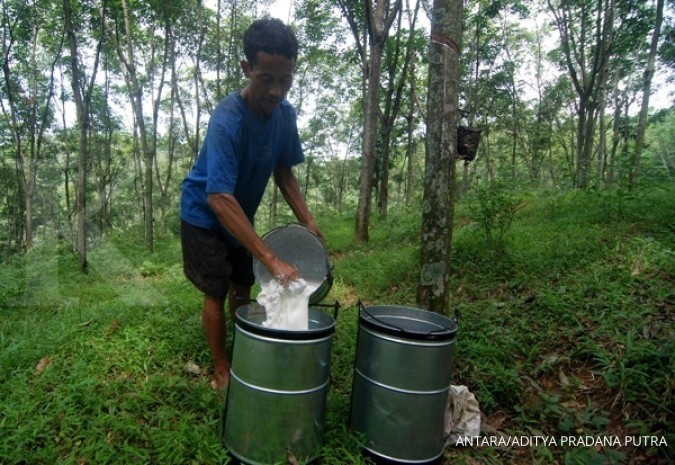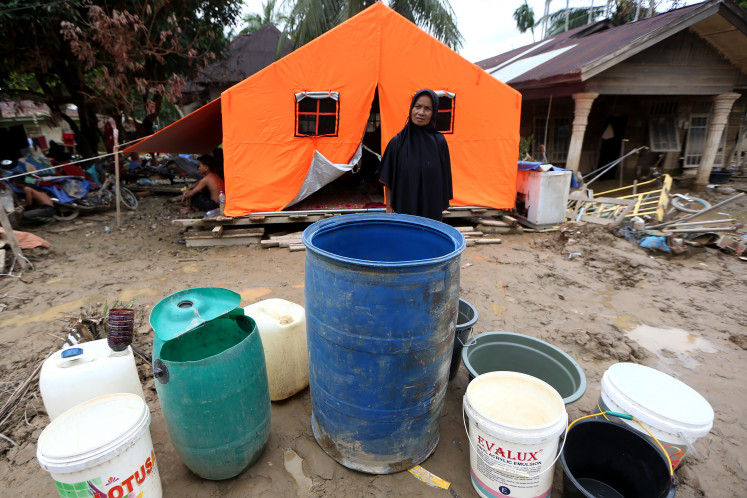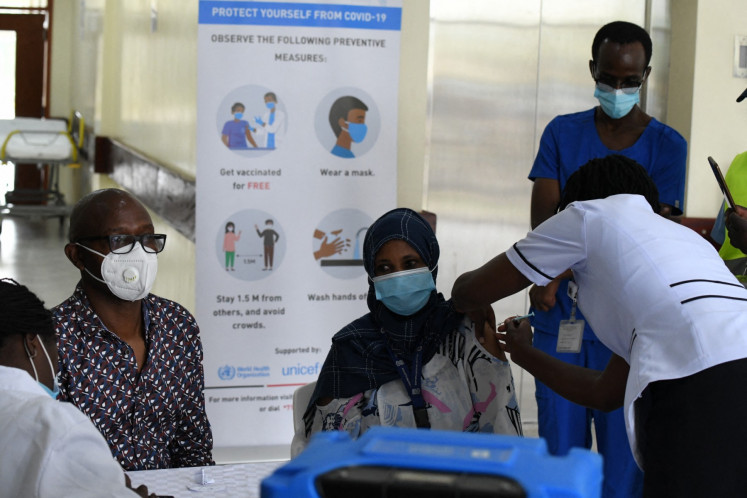Popular Reads
Top Results
Can't find what you're looking for?
View all search resultsPopular Reads
Top Results
Can't find what you're looking for?
View all search resultsEDITORIAL: Rubber farmers cry for help
The prices in the country are half of what rubber growers in Thailand and Malaysia have enjoyed.
Change text size
Gift Premium Articles
to Anyone
T
he government should look seriously into the grievances of rubber farmers who have been complaining about low prices over the last five years. True, the price of rubber, like most other commodities, such as palm oil, cacao and coal, is mainly influenced by global supply and demand, especially for Indonesia, which, as the world’s second largest producer, exports more than 80 percent of its output.
But the core of the rubber farmers’ grievances, which were raised by the industry and farmer associations at a working session with the agriculture commission of the House of Representatives on Monday, is that the prices in the country are half of what rubber growers in Thailand and Malaysia have enjoyed.
The price of rubber, like most commodities, declined from as high as US$5 per kilogram in 2011 to as low as $1.2 in 2015 due to the global production surplus and declining demand, notably in China. Although the prices rose last year to more than $2 per kg, this is likely unsustainable because the price increase was rather artificial, not generated by real market forces but by a joint move by Indonesia, Malaysia and Thailand, which together account for 80 percent of the global output to cut supplies to the international market under an agreed export tonnage scheme.
Despite the moderate price rise generated by the cartel-like move, most rubber farmers in Indonesia continue to earn only half of what rubber growers in Thailand, the world’s largest producer, and Malaysia, the third largest producer, enjoy.
The farmers’ grievances deserve the government’s attention because, strikingly different from palm oil, more than 85 percent of the estimated 3.6 million hectares of rubber estates in the country are owned by smallholders. The industry association reported that rubber plantations employed around 2.5 million workers and contributed $3.4 billion to the country’s export earnings last year.
It is most urgent for the agriculture ministry, notably the directorate general of plantations, to act firmly to help the farmers. It should not be done by subsidizing their rubber, as the Thai government did when it spent billions of dollars to support the Thai farmers, because such a policy would only distort the market and is by no means sustainable.
Rather, the government should investigate as to why our farmers have been dealing with such low prices, compared to their counterparts in other major rubber-producing countries. The directorate general of plantations should look into the structure of relations between the smallholders and rubber-processing companies.
The government should also act firmly in regard to the findings of several studies that show the yield of our rubber plantations is only half of that in Thailand and Malaysia due to aging trees. The quality of Indonesia’s latex is very low because of poor tapping practices.
Mutually beneficial collaboration between rubber-processing companies and smallholders under government oversight, as widely implemented between big oil palm plantations and smallholders, could be an effective partnership model to solve the problems of low yield and poor quality because they need each other for survival.










